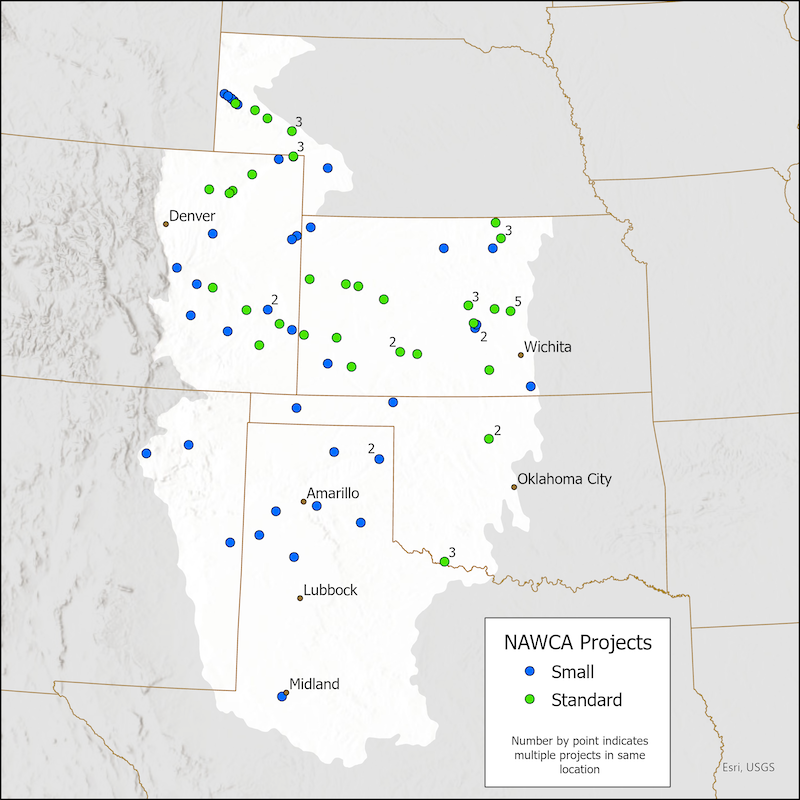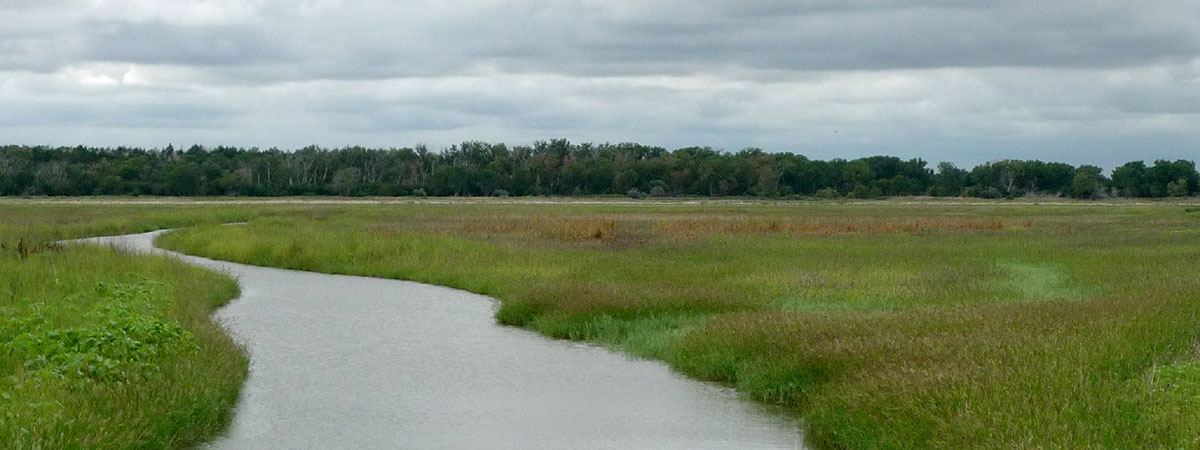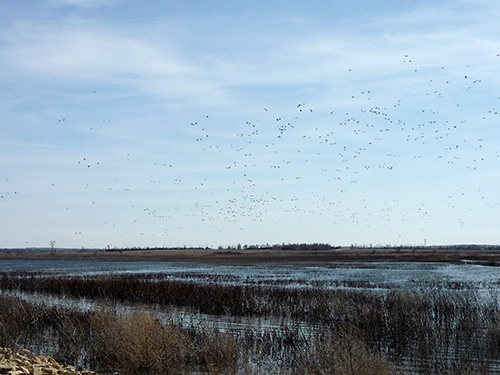Within the PLJV region, many of the wetland acquisition, restoration, and enhancement projects are made possible through funding from U.S. Fish and Wildlife Service through the North American Wetlands Conservation Act (NAWCA). Two competitive NAWCA grant programs provide matching funds for wetland projects that benefit migratory birds in the United States, Canada and Mexico.

The NAWCA Small Grants Program can help fund small-scale wetlands projects, including playa restoration. Project proposals may include activities to restore or enhance wetlands, streams and associated uplands, land acquisition costs such as title fees or easements, and long-term leases of these habitats. Up to $250,000 may be requested and requires a one-to-one match with non-federal funds.
For large-scale wetland projects, the NAWCA Standard Grants Program may be more appropriate. While allowed project activities and match requirements are the same for both grants, the standard program allows for requests up to $3,000,000. Developing a standard grant proposal takes a significant amount of time, regardless of whether you are a first-time or seasoned applicant, so it is best to start the process early.
Both of these are partnership-based grant programs, so developing a working relationship with multiple partners is key. The NAWCA review committee also relies on Migratory Bird Joint Ventures to rank and evaluate proposals from their region, so it is essential that applicants work with PLJV when developing NAWCA proposals within our boundaries (see PLJV map).
Wondering if a NAWCA grant may be a fit for your project? If you answer yes to all of the following questions, you may want to consider applying for a grant. Download our Small NAWCA Grant Proposal Checklist for more information.
- Does the wetland support waterfowl, shorebirds and/or other wetland-associated migratory birds?
- Can you match your funding request with at least the same amount (in-kind and/or cash) from non-federal sources?
- Do you have more than one partner contributing money or in-kind work to the project?
WE CAN HELP
If you are interested in applying for a NAWCA grant, we can help you conceptualize the project, suggest additional partners, review the proposal, and provide the necessary bird conservation information such as the project’s value for birds. We have also developed checklists and suggested timelines to help applicants stay on top of proposal requirements. For assistance, contact Conservation Delivery Manager Christopher Rustay well in advance of when you would like to submit your proposal.
Examples of NAWCA Grant Projects
NAWCA grants have been used to fund many wetland projects in the PLJV region, including restoration and enhancement work, as well as acquisitions and conservation easements. Because playas are the primary source of recharge for the Ogallala aquifer, NAWCA grants may also be a significant source of funds for local governments seeking to deal with declining aquifer levels through playa conservation. A few examples of funded projects are listed below.
Texas Playa Conservation Initiative, Texas
Since 2018, three NAWCA small grants have been awarded to fund playa restoration work in the Texas panhandle. Grant and matching funds have been and continue to be used to fill pits and remove accumulated sediment in playa basins as well as to plant grass buffers. These practices restore the natural function of the playa system providing important wetland habitat for waterfowl and upland birds as well as aquifer recharge and water filtration which benefits local communities. Together, these grants will restore over 1,600 acres of playas and over 1,700 acres of uplands.
Quivira National Wildlife Refuge, Kansas
NAWCA small grants have helped improve the efficiency of water use and productivity of many wetlands on Quivira National Wildlife Refuge. This sand prairie-wetland complex supports migrating waterfowl and shorebirds and is a major congregation area for migrating waterbirds in the Central Flyway. The main objective of this multi-year project was to fill deeper borrow areas in selected wetland units in summer to improve water conservation and help accomplish wetland habitat goals and objectives.
Kiowa Creek Natural Area, Colorado
A NAWCA small grant helped partners restore a natural area near Eads, Colorado. The project brought the community together to help reclaim an eight-acre pond and spring-fed wetland system while restoring the sandsage prairie uplands to protect the wetlands into the future. The project also included eradicating invasive tamarisk and Russian olive in gullies and replanting with willows.
Platte River Confluence, Nebraska
A NAWCA standard grant funded the conservation of riparian habitat along both the North and South Platte Rivers near their confluence in North Platte, Nebraska. Partners were able to permanently protect 1,907 acres of wetlands and associated habitats through direct acquisition or perpetual conservation easements. The North Platte River provides important migration and wintering habitat for hundreds of thousands of waterfowl and other migratory birds. Thirteen partners contributed over twice the $1,000,000 grant amount in match.
Jamestown Wildlife Area, Kansas
Three NAWCA standard grants have been awarded to help acquire and restore the original marsh habitat at Jamestown Wildlife Area, which provides important migration habitat in the Central Flyway. Historically, Jamestown and Talmo Marsh were expansive wetland habitats, salt flats and meandering riparian areas. Over 7,000 acres of wetlands and grasslands were acquired, restored or protected including over 1,400 acres of seasonal wetland habitat such as rare salt marsh. Additionally, other wetlands received improved management structures to help with sediment removal and managing water levels for waterfowl and shorebird habitat.



